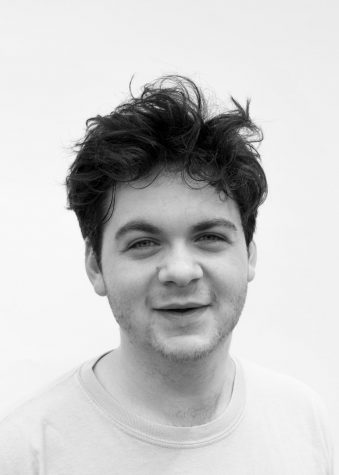“No Time to Die”: A Remarkable Action Romance
December 1, 2021
Rating: 4/5 Falcons
“Why would I betray you?” Dr. Madeleine Swann asks James Bond at the start of No Time to Die. “We all have our secrets. We just didn’t get to yours yet,” Bond replies, unaware of how much his lover is hiding. Directed by Cary Joji Fukunaga, adventure movie No Time to Die starring Léa Seydoux and Daniel Craig is a story of danger, lies, and love: the perfect combination for a worthwhile watch.
The opening scene sublimely foreshadows the violence that is in store: it is a dramatically snowy day, and the young Madeleine (Léa Seydoux) watches from beneath her bed as a man tragically shoots and kills her mother. Madeleine narrowly escapes the killer, Safin, in an intense chase scene on a frozen lake. 17 years in the future, a grown up Dr. Madeleine Swann is collaborating with Bond (Daniel Craig) on a spy mission in Italy. Chaos soon follows when assassins ambush Bond, who accuses Dr. Swann of working with them. She denies his accusation: “Why would I betray you?” Bond refuses to trust her, sending her away by train. The scene is melancholic and overly sunny; Swann looks beautiful in a prim white dress that highlights her sad blue eyes, while Bond is disheveled, dirty, and angry as he marches her to the doors of her train. The cinematography of the departure scene is superb. Eerie daytime lighting is contrasted by Swann’s sadness and Bond’s anger. The deliberate cheerful lighting of this climactic moment helps make the scene superior to all other goodbye clips.
After this scene, the film is action-packed and filled with adventurous shootouts. The shootout scenes have an important air of humor fused into them, with fast-paced dialogue between Bond and his spy partners. Director Fukunaga ensures that the movie does not take itself too seriously. In fact, in the middle of a gunfight, Bond and co-agent Paloma (Ana de Armas) pause to take shots at a bar before returning to the shootout. Those lighthearted scenes are enjoyable to watch and give the viewer a much-needed break from intense consecutive action.
At the end of the movie, Swann and her daughter Mathilde are captured by the murderer Safin. He takes them away to his island factory, where he mass produces drugs that he plans to use to kill millions. Here, the cinematographic decisions made by the director are deliberate and dark, weaving together a complicated adrenaline-filled plot with visuals such as cleverly chosen lighting for symbolism and possible metaphorical meaning. Upon landing on the island, Bond has to kill the security, free Madeleine and Mathilde, kill Safin, and leave by boat before his spies explode the island, all without getting infected by drugs or being killed by Safin. Many questions arise. Will Bond succeed? Is Mathilde secretly his daughter? Will this end happily ever after? The ending leaves the viewer emotional, surprised, and satisfied. Viewers will likely think about the finale for weeks after they watch it. This is why No Time to Die is exceptional; it is memorable and breaks the rules of typical love stories. Go watch it right now.
This piece also appears in our November 2021 print edition.










